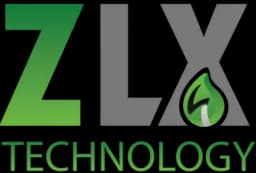Introduction
Recycling has long been a pillar of sustainability, but traditional methods are no longer sufficient in the face of growing waste challenges. Today, technological innovations are revolutionising how we perceive and manage waste. No longer just a disposal method, recycling is transforming into a system of resource recovery—turning yesterday's trash into tomorrow's raw materials. These innovations are reshaping industries, reducing reliance on virgin materials, and paving the way for a sustainable, circular economy.
The Need for Recycling Innovations
With global waste generation expected to exceed 3.4 billion tonnes by 2050, conventional recycling methods are struggling to keep pace. Contamination, low sorting efficiency, and limited material recovery rates have reduced the impact of traditional recycling. Innovations in material science, machine learning, and biotechnology are making it possible to recover more resources, reduce landfill dependency, and generate economic value from what was once discarded.
Modern Recycling Technologies
- AI and Robotics in Waste Sorting: Artificial intelligence and robotics are transforming material recovery facilities (MRFs). High-speed robotic arms equipped with computer vision can identify, sort, and separate recyclables with far greater precision and speed than humans.
- Chemical Recycling: Unlike traditional mechanical recycling, which often downgrades plastic quality, chemical recycling breaks polymers down to their original monomers, allowing for the production of virgin-quality materials.
- Bio-Recycling: Biological recycling uses enzymes and microbes to break down complex materials like PET plastics or synthetic textiles, offering eco-friendly alternatives to landfill or incineration.
Circular Economy and Resource Recovery
Innovations in recycling play a critical role in transitioning to a circular economy. Advanced recycling technologies enable the recovery of high-quality materials that can be reintegrated into the production cycle, reducing material costs and aligning with sustainability regulations.
Urban Mining and E-Waste Recycling
Urban mining refers to reclaiming raw materials such as gold, copper, and rare earth metals from discarded electronics. Advanced shredders, eddy current separators, and chemical extractors make e-waste a rich source of valuable resources.
Smart Packaging and Design for Recyclability
Smart packaging incorporates materials and construction that make sorting and recycling easier. Examples include mono-material packaging, biodegradable films, and digital watermarks for automated identification.
Role of Data and IoT in Optimising Recycling
The Internet of Things (IoT) and big data analytics are streamlining recycling logistics. Smart bins equipped with sensors monitor fill levels and signal collection needs in real time, reducing unnecessary truck routes and emissions.
Global Case Studies
- Europe: Sweden and Germany lead in recycling rates thanks to strong policy frameworks, public awareness, and investment in modern infrastructure.
- Asia: Japan employs meticulous waste sorting systems and advanced thermal recycling technologies.
- North America: Cities like San Francisco and Vancouver have adopted zero-waste goals supported by AI-driven material recovery facilities.
Barriers to Widespread Adoption
- High capital costs
- Inconsistent material streams
- Limited public participation
- Inadequate policy support
Future Outlook
The future of recycling lies in integrating innovation across every stage of the product lifecycle. As AI becomes smarter, biotechnologies more efficient, and policy frameworks more supportive, we can expect a new era of intelligent, decentralised, and closed-loop recycling systems.
Conclusion
Innovations in recycling are not just incremental improvements—they are paradigm shifts. By turning waste into valuable resources, these technologies close the loop on consumption, drive economic growth, and protect the planet.

